The N-degron pathway mediates lipophagy: The chemical modulation of lipophagy in obesity and NAFLD
- PMID: 37385404
- PMCID: PMC10529862
- DOI: 10.1016/j.metabol.2023.155644
The N-degron pathway mediates lipophagy: The chemical modulation of lipophagy in obesity and NAFLD
Abstract
Background and aims: Central to the pathogenesis of nonalcoholic fatty liver disease (NAFLD) is the accumulation of lipids in the liver and various fat tissues. We aimed to elucidate the mechanisms by which lipid droplets (LDs) in the liver and adipocytes are degraded by the autophagy-lysosome system and develop therapeutic means to modulate lipophagy, i.e., autophagic degradation of LDs.
Methods: We monitored the process in which LDs are pinched off by autophagic membranes and degraded by lysosomal hydrolases in cultured cells and mice. The autophagic receptor p62/SQSTM-1/Sequestosome-1 was identified as a key regulator and used as a target to develop drugs to induce lipophagy. The efficacy of p62 agonists was validated in mice to treat hepatosteatosis and obesity.
Results: We found that the N-degron pathway modulates lipophagy. This autophagic degradation initiates when the molecular chaperones including BiP/GRP78, retro-translocated from the endoplasmic reticulum, is N-terminally (Nt-) arginylated by ATE1 R-transferase. The resulting Nt-arginine (Nt-Arg) binds the ZZ domain of p62 associated with LDs. Upon binding to Nt-Arg, p62 undergoes self-polymerization and recruits LC3+ phagophores to the site of lipophagy, leading to lysosomal degradation. Liver-specific Ate1 conditional knockout mice under high fat diet developed severe NAFLD. The Nt-Arg was modified into small molecule agonists to p62 that facilitate lipophagy in mice and exerted therapeutic efficacy in obesity and hepatosteatosis of wild-type but not p62 knockout mice.
Conclusions: Our results show that the N-degron pathway modulates lipophagy and provide p62 as a drug target to treat NAFLD and other diseases related with metabolic syndrome.
Keywords: Hepatosteatosis; Lipid droplet; N-terminal arginylation; Obesity; The autophagy-lysosome system; p62/SQSTM1/Sequestosome-1.
Copyright © 2023 Elsevier Inc. All rights reserved.
Conflict of interest statement
Declaration of competing interest Seoul National University and AUTOTAC Bio, Inc. have filed patent applications based on this study.
Figures
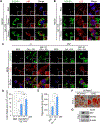
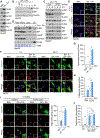

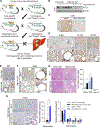
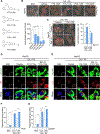
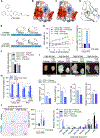
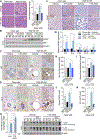

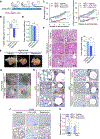
Similar articles
-
The Cys-N-degron pathway modulates pexophagy through the N-terminal oxidation and arginylation of ACAD10.Autophagy. 2023 Jun;19(6):1642-1661. doi: 10.1080/15548627.2022.2126617. Epub 2022 Oct 2. Autophagy. 2023. PMID: 36184612 Free PMC article.
-
Amino-terminal arginylation targets endoplasmic reticulum chaperone BiP for autophagy through p62 binding.Nat Cell Biol. 2015 Jul;17(7):917-29. doi: 10.1038/ncb3177. Epub 2015 Jun 15. Nat Cell Biol. 2015. PMID: 26075355 Free PMC article.
-
Regulation of autophagic proteolysis by the N-recognin SQSTM1/p62 of the N-end rule pathway.Autophagy. 2018;14(2):359-361. doi: 10.1080/15548627.2017.1415190. Epub 2018 Jan 29. Autophagy. 2018. PMID: 29261001 Free PMC article.
-
The ménage à trois of autophagy, lipid droplets and liver disease.Autophagy. 2022 Jan;18(1):50-72. doi: 10.1080/15548627.2021.1895658. Epub 2021 Apr 2. Autophagy. 2022. PMID: 33794741 Free PMC article. Review.
-
Lipophagy and liver disease: New perspectives to better understanding and therapy.Biomed Pharmacother. 2018 Jan;97:339-348. doi: 10.1016/j.biopha.2017.07.168. Epub 2017 Nov 6. Biomed Pharmacother. 2018. PMID: 29091883 Review.
Cited by
-
Autophagy and hepatic lipid metabolism: mechanistic insight and therapeutic potential for MASLD.NPJ Metab Health Dis. 2024;2(1):19. doi: 10.1038/s44324-024-00022-5. Epub 2024 Aug 2. NPJ Metab Health Dis. 2024. PMID: 39100919 Free PMC article. Review.
-
Heat shock proteins (HSPs) in non-alcoholic fatty liver disease (NAFLD): from molecular mechanisms to therapeutic avenues.Biomark Res. 2024 Oct 12;12(1):120. doi: 10.1186/s40364-024-00664-z. Biomark Res. 2024. PMID: 39396024 Free PMC article. Review.
-
Mechanisms and therapeutic implications of selective autophagy in nonalcoholic fatty liver disease.J Adv Res. 2025 Jan;67:317-329. doi: 10.1016/j.jare.2024.01.027. Epub 2024 Feb 1. J Adv Res. 2025. PMID: 38295876 Free PMC article. Review.
-
The role of lipophagy in liver cancer: mechanisms and targeted therapeutic interventions.Front Cell Dev Biol. 2025 Jul 8;13:1562542. doi: 10.3389/fcell.2025.1562542. eCollection 2025. Front Cell Dev Biol. 2025. PMID: 40698038 Free PMC article. Review.
References
-
- Byrne CD and Targher G, NAFLD: a multisystem disease. J Hepatol, 2015. 62(1 Suppl): p. S47–64. - PubMed
Publication types
MeSH terms
Substances
Grants and funding
LinkOut - more resources
Full Text Sources
Medical
Molecular Biology Databases
Research Materials
Miscellaneous

